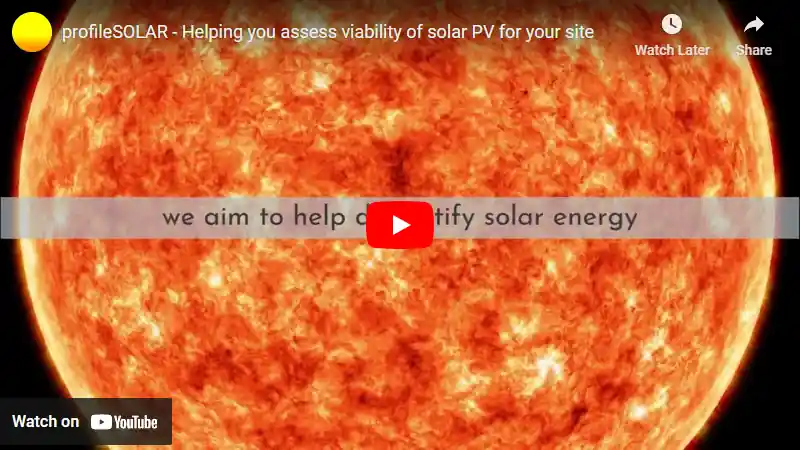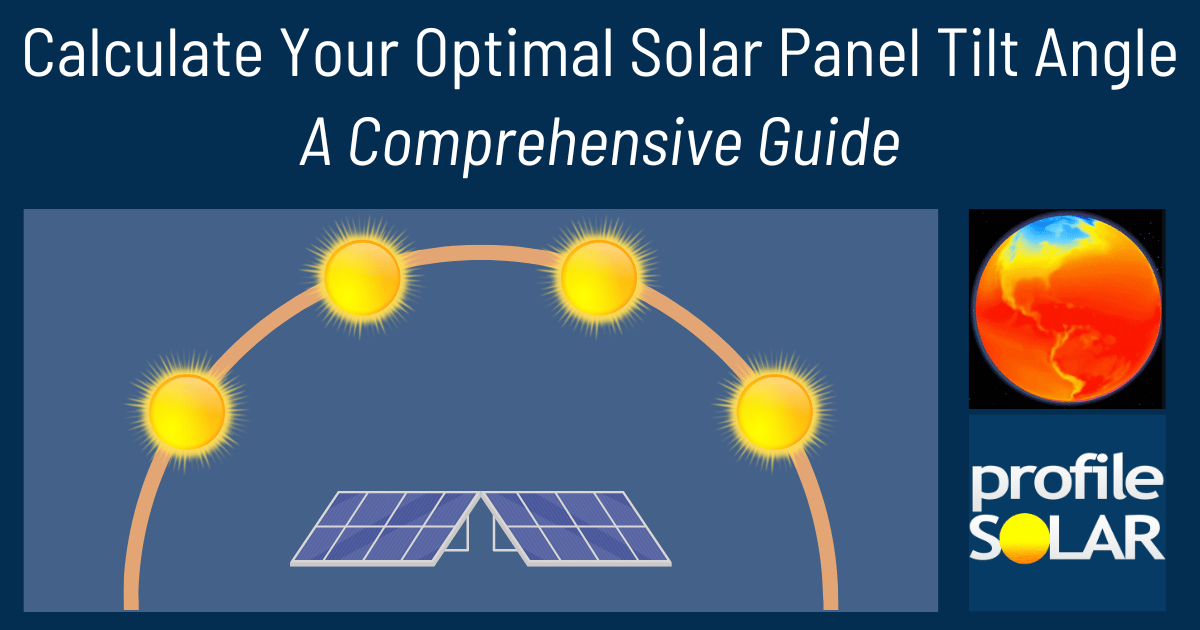

Saint Arnaud, Victoria, Australia is a decent location for generating solar energy all year round. The amount of energy you can generate from solar panels depends on the season. In summer, you can expect to generate 8.50 kilowatt-hours (kWh) per day for each kilowatt (kW) of solar panels installed. This decreases to 4.49 kWh/day in autumn and further drops to 2.77 kWh/day in winter when the days are shorter and there's less sunlight available. However, it increases again in spring with an expected generation of 6.34 kWh/day.
The best times of year to generate solar power at this location would be during the summer and spring months when sunlight is plentiful.
For a fixed panel installation at this location, tilting your panels at an angle of 31 degrees facing North will give you the maximum total yearly output from your solar photovoltaic (PV) system.
Regarding local factors that may affect solar production at Saint Arnaud, it's important to consider things like weather patterns and topography which could potentially block sunlight or damage your system.
Saint Arnaud is known for its variable climate with hot summers and cool winters which could impact the efficiency of your PV system due to overheating or lack of sunlight respectively during these periods.
Also, considering its rural setting surrounded by farmland and low hills there might be possibilities that certain areas might have shading issues due to trees or structures blocking direct sunlight onto the panels especially in winter months when sun sits low on horizon.
To overcome these potential impediments:
1) You should ensure that your site has clear access to sunlight throughout the day without any obstructions.
2) Regular maintenance including cleaning off dust or debris from panels will help maintain their efficiency.
3) Using high-quality PV modules that perform well under different temperature conditions can also help improve performance.
4) Installing tracking systems that follow the sun's movement throughout the day can also maximize solar energy production.
Remember, local factors can vary greatly so it's always a good idea to consult with a local solar installer who has experience with your specific area.
Note: The Southern Temperate Zone extends from -35° latitude South down to -66.5° latitude.
So far, we have conducted calculations to evaluate the solar photovoltaic (PV) potential in 390 locations across Australia. This analysis provides insights into each city/location's potential for harnessing solar energy through PV installations.
Link: Solar PV potential in Australia by location
Become the exclusive sponsor for Saint Arnaud, Australia!
Solar output per kW of installed solar PV by season in Saint Arnaud
Seasonal solar PV output for Latitude: -36.6213851, Longitude: 143.2648556 (Saint Arnaud, Australia), based on our analysis of 8760 hourly intervals of solar and meteorological data (one whole year) retrieved for that set of coordinates/location from NASA POWER (The Prediction of Worldwide Energy Resources) API:




Ideally tilt fixed solar panels 31° North in Saint Arnaud, Australia
To maximize your solar PV system's energy output in Saint Arnaud, Australia (Lat/Long -36.6213851, 143.2648556) throughout the year, you should tilt your panels at an angle of 31° North for fixed panel installations.
As the Earth revolves around the Sun each year, the maximum angle of elevation of the Sun varies by +/- 23.45 degrees from its equinox elevation angle for a particular latitude. Finding the exact optimal angle to maximise solar PV production throughout the year can be challenging, but with careful consideration of historical solar energy and meteorological data for a certain location, it can be done precisely.
We use our own calculation, which incorporates NASA solar and meteorological data for the exact Lat/Long coordinates, to determine the ideal tilt angle of a solar panel that will yield maximum annual solar output. We calculate the optimal angle for each day of the year, taking into account its contribution to the yearly total PV potential at that specific location.

Seasonally adjusted solar panel tilt angles for Saint Arnaud, Australia
If you can adjust the tilt angle of your solar PV panels, please refer to the seasonal tilt angles below for optimal solar energy production in Saint Arnaud, Australia. As mentioned earlier, for fixed-panel solar PV installations, it is optimal to maintain a 31° North tilt angle throughout the year.
| Overall Best Summer Angle | Overall Best Autumn Angle | Overall Best Winter Angle | Overall Best Spring Angle |
|---|---|---|---|
| 20° North in Summer | 41° North in Autumn | 51° North in Winter | 30° North in Spring |
Our recommendations take into account more than just latitude and Earth's position in its elliptical orbit around the Sun. We also incorporate historical solar and meteorological data from NASA's Prediction of Worldwide Energy Resources (POWER) API to assign a weight to each ideal angle for each day based on its historical contribution to overall solar PV potential during a specific season.
This approach allows us to provide much more accurate recommendations than relying solely on latitude, as it considers unique weather conditions in different locations sharing the same latitude worldwide.
Topography for solar PV around Saint Arnaud, Australia
Saint Arnaud is located in the Wimmera region of Victoria, Australia. The topography around this area is relatively flat with gentle undulating hills. It's mostly rural landscape, dominated by agricultural fields and pastures.
The flat nature of the land makes it ideally suited for large-scale solar photovoltaic (PV) installations. There's plenty of sunlight throughout the year which can be harnessed for generating electricity.
Areas like Avoca River Flats or open farmlands that are not suitable for agriculture due to poor soil quality could potentially be used for solar PV installations without disrupting agricultural activities. Also, any unused industrial lands near Saint Arnaud could also be considered as potential sites.
However, before setting up a solar farm, a detailed site assessment would need to be carried out considering various factors such as access to grid connection, environmental impact and local planning regulations among others.
Australia solar PV Stats as a country
Australia ranks 7th in the world for cumulative solar PV capacity, with 19,076 total MW's of solar PV installed. This means that 10.70% of Australia's total energy as a country comes from solar PV (that's 2nd in the world). Each year Australia is generating 742 Watts from solar PV per capita (Australia ranks 2nd in the world for solar PV Watts generated per capita). [source]
Are there incentives for businesses to install solar in Australia?
Yes, there are a variety of incentives available in Australia to businesses wanting to install solar energy. These include:
1. Renewable Energy Target (RET): The RET provides businesses with financial assistance for installing and operating renewable energy systems such as solar panels. Businesses may be eligible to receive certificates that can be sold or traded on the open market for additional income.
2. Feed-in Tariffs: Some states offer feed-in tariffs which pay businesses for generating and exporting excess electricity from their solar panel system back into the grid during peak demand periods.
3. Solar Credits: The Solar Credits program provides households and small business owners with an upfront discount when purchasing a new solar system, based on the amount of renewable energy generated by the system over its lifetime.
4. Tax Breaks: Small business owners may be able to claim tax deductions on certain expenses associated with installing a solar power system, including installation costs, maintenance expenses and interest payments related to financing arrangements taken out specifically for this purpose.
Do you have more up to date information than this on incentives towards solar PV projects in Australia? Please reach out to us and help us keep this information current. Thanks!
Feeling generous?

Share this with your friends!


Compare this location to others worldwide for solar PV potential
The solar PV analyses available on our website, including this one, are offered as a free service to the global community. Our aim is to provide education and aid informed decision-making regarding solar PV installations.
However, please note that these analyses are general guidance and may not meet specific project requirements. For in-depth, tailored forecasts and analysis crucial for feasibility studies or when pursuing maximum ROI from your solar projects, feel free to contact us; we offer comprehensive consulting services expressly for this purpose.
Helping you assess viability of solar PV for your site
Calculate Your Optimal Solar Panel Tilt Angle: A Comprehensive Guide
Enhance your solar panel's performance with our in-depth guide. Determine the best tilt angle using hard data, debunk common misunderstandings, and gain insight into how your specific location affects solar energy production.

.svg)





